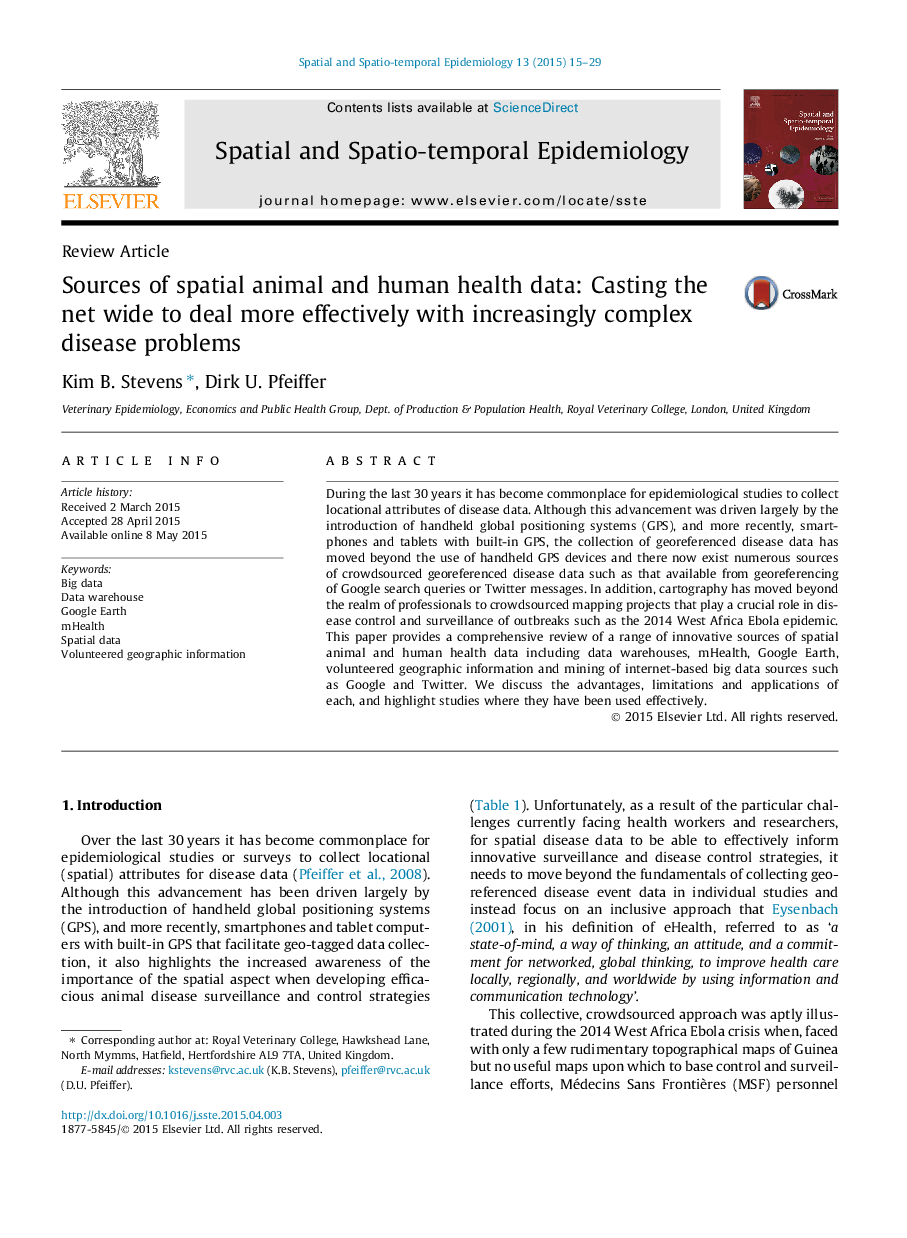| Article ID | Journal | Published Year | Pages | File Type |
|---|---|---|---|---|
| 1064314 | Spatial and Spatio-temporal Epidemiology | 2015 | 15 Pages |
•Review a range of innovative sources of spatial health data.•Includes data warehouses, mHealth, Google Earth.•Includes volunteered geographic information and mining big data.•Discuss advantages, limitations and applications of each data source.•Highlight studies where they have been used effectively.
During the last 30 years it has become commonplace for epidemiological studies to collect locational attributes of disease data. Although this advancement was driven largely by the introduction of handheld global positioning systems (GPS), and more recently, smartphones and tablets with built-in GPS, the collection of georeferenced disease data has moved beyond the use of handheld GPS devices and there now exist numerous sources of crowdsourced georeferenced disease data such as that available from georeferencing of Google search queries or Twitter messages. In addition, cartography has moved beyond the realm of professionals to crowdsourced mapping projects that play a crucial role in disease control and surveillance of outbreaks such as the 2014 West Africa Ebola epidemic. This paper provides a comprehensive review of a range of innovative sources of spatial animal and human health data including data warehouses, mHealth, Google Earth, volunteered geographic information and mining of internet-based big data sources such as Google and Twitter. We discuss the advantages, limitations and applications of each, and highlight studies where they have been used effectively.
